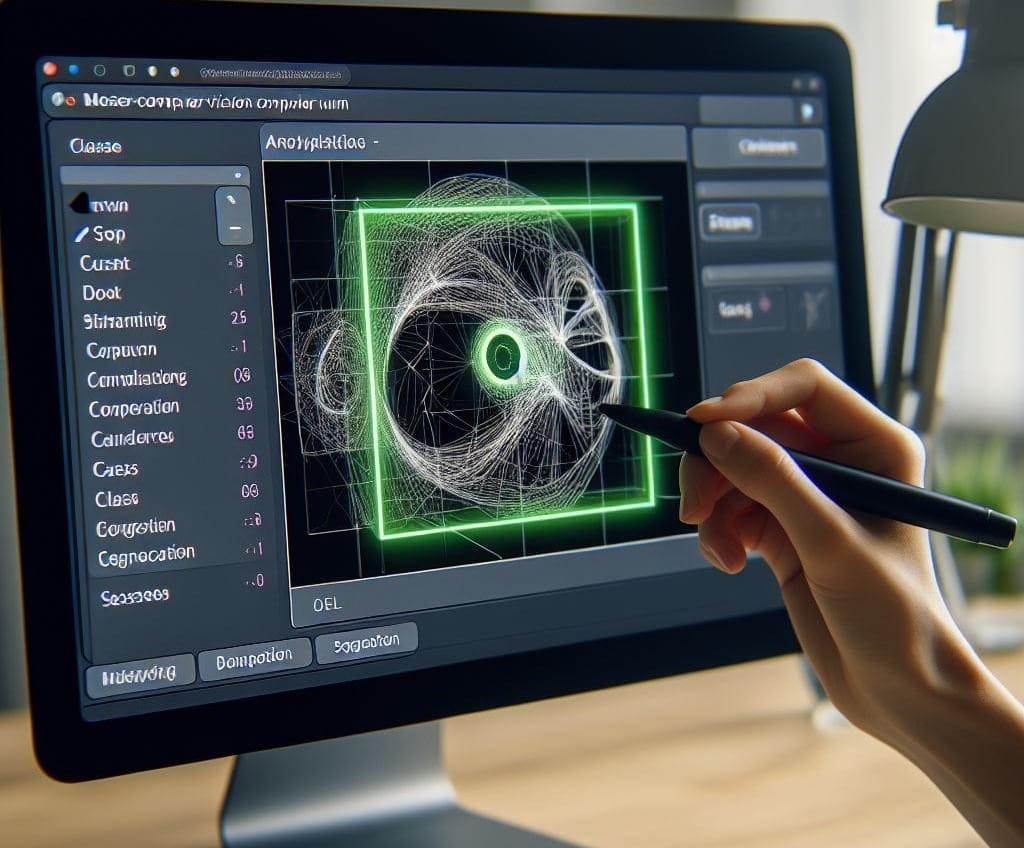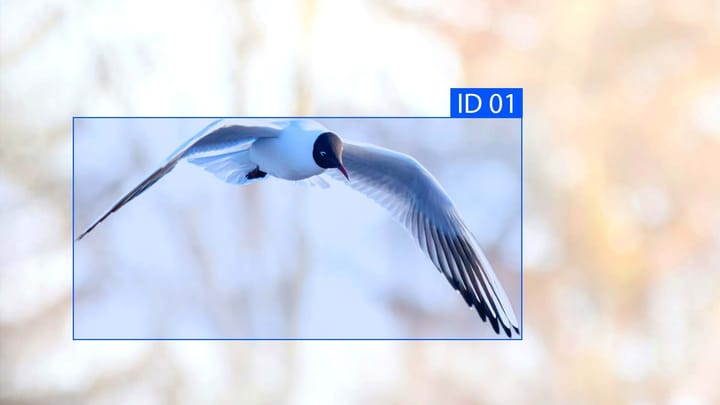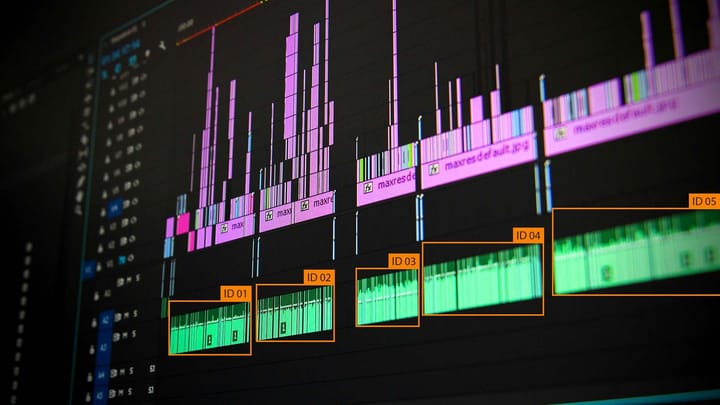Leveraging CVAT for Machine Learning Projects

When it comes to machine learning projects, precise data labeling plays a crucial role in ensuring accurate model training and performance. To achieve this level of accuracy, developers and researchers need a reliable computer vision annotation tool. That's where CVAT comes in.
CVAT, short for Computer Vision Annotation Tool, is an open-source data annotation tool designed specifically for machine learning projects. It provides a user-friendly interface, powerful features, and a comprehensive set of annotation techniques. With its ability to handle various data types, CVAT is the ideal choice for developers and researchers seeking a robust annotation tool.
By utilizing CVAT, developers can streamline the annotation process, thereby saving valuable time and effort. Annotation teams can collaborate seamlessly, ensuring consistent labeling and improved accuracy. Furthermore, CVAT allows for efficient data management, enabling easy organization and retrieval of annotated data.
Key Takeaways:
- CVAT is an open-source data annotation tool for machine learning projects.
- It provides a user-friendly interface and supports various annotation techniques.
- CVAT streamlines the annotation process, improving project efficiency.
- It promotes collaboration within annotation teams, ensuring consistent labeling.
- CVAT enables efficient data management, making organization and retrieval easier.
Understanding CVAT: An Overview
CVAT, or Computer Vision Annotation Tool, is an essential annotation software for machine learning projects. It offers a comprehensive set of features and functionalities designed to streamline the annotation process and enhance project efficiency. By utilizing CVAT, developers and researchers can achieve precise data labeling, leading to improved accuracy and performance of machine learning models.
CVAT serves as a powerful tool for annotation in various machine learning projects. It allows users to annotate images, videos, and 3D point clouds, making it suitable for a wide range of applications, from object detection and semantic segmentation to optical character recognition and image classification.
With CVAT, users can create annotation tasks, assign them to team members, and track the progress in real-time. This collaborative environment promotes efficient teamwork and enables seamless communication among project stakeholders.
One of the notable features of CVAT is its versatile annotation capabilities. Users can choose from a variety of annotation techniques, such as bounding boxes, polygons, key points, and cuboids, based on their project requirements. This flexibility ensures that CVAT can handle different types of datasets and annotation tasks, providing a comprehensive solution for machine learning projects.
"CVAT has revolutionized the annotation process for machine learning projects. Its intuitive interface, extensive annotation options, and collaborative features make it an indispensable tool for researchers and developers."
Moreover, CVAT offers an easy-to-use tutorial that guides users through the annotation process and familiarizes them with the software's functionalities. This tutorial serves as a valuable resource for both beginners and experienced users, helping them make the most of CVAT's capabilities.
To further illustrate the importance of CVAT in machine learning projects, consider the following table highlighting its key features:
| Feature | Description |
|---|---|
| Annotation Techniques | Supports various annotation methods, including bounding boxes, polygons, key points, and cuboids. |
| Collaboration | Enables teams to work together on annotation tasks, with real-time progress tracking and communication. |
| Data Types | Allows annotation of images, videos, and 3D point clouds, providing versatility for different projects. |
| Integration | Seamlessly integrates with other machine learning tools and frameworks, facilitating a smooth workflow. |
| Flexibility | Provides customizable annotation templates and options, adapting to unique project requirements. |
As evident from the above information, CVAT is a reliable and powerful annotation software for machine learning projects. Its intuitive interface, extensive annotation options, and collaborative features make it an indispensable tool for researchers, developers, and professionals in the field.
The Benefits of Using CVAT for Machine Learning
Utilizing CVAT in machine learning projects offers various benefits that enhance accuracy, streamline the annotation process, and promote collaboration among team members. By utilizing this open-source data annotation tool, developers can optimize their workflow and achieve better results.
Promotes Accurate Annotations
CVAT excels in ensuring precise data labeling by providing a platform that allows users to annotate images and videos with ease. Its intuitive interface and comprehensive annotation tools enable users to mark objects, draw polygons, and label attributes with precision. By incorporating CVAT into the annotation process, machine learning models can be trained with highly accurate and reliable data, leading to improved performance and results.
Streamlines Annotation Process
The annotation process can be time-consuming and challenging without the right tools. CVAT simplifies and accelerates the annotation workflow by offering features such as automatic interpolation and merging of annotations, as well as the ability to filter and search for specific annotations. These functionalities reduce manual labor, increase efficiency, and allow annotators to focus on more complex tasks, ultimately speeding up the entire machine learning project development lifecycle.
Promotes Collaboration and Teamwork
CVAT facilitates collaboration and fosters teamwork by allowing multiple users to annotate and review data simultaneously. Its built-in user management system enables team members to work on the same project, share annotations, and communicate effectively within the platform. This collaborative environment enhances productivity, ensures consistency in annotations, and promotes knowledge sharing among team members, leading to better overall project outcomes.
To maximize the benefits of CVAT, developers and annotators can follow these best practices:
- Thoroughly understand the annotation workflow and the specific requirements of the machine learning project.
- Properly configure the annotation settings and tools in CVAT to align with the project's needs.
- Collaborate closely with domain experts to ensure accurate labeling and annotation guidelines.
- Regularly review and validate annotations to maintain data quality and consistency.
- Leverage CVAT's tracking and versioning capabilities to monitor and manage annotation progress effectively.
| Benefits of Using CVAT for Machine Learning | |
|---|---|
| Promotes Accurate Annotations | With its comprehensive annotation tools, CVAT ensures precise data labeling. |
| Streamlines Annotation Process | CVAT simplifies the workflow and increases efficiency through automated features. |
| Promotes Collaboration and Teamwork | CVAT enables multiple users to work simultaneously and enhances communication. |
CVAT: The Key to Precise Data Labeling
In machine learning projects, precise data labeling plays a crucial role in training accurate and efficient models. CVAT, the leading computer vision annotation tool, offers a powerful solution that enables developers and researchers to achieve precise data labeling with ease.
With a wide range of features and advanced functionality, CVAT empowers users to annotate data accurately, ensuring the highest quality annotations for machine learning projects. It caters to various data types, including images, videos, and 3D point clouds, making it a versatile annotation software for ML projects.
Accurate Annotations for Training ML Models
CVAT's annotation capabilities enable users to label objects, segments, and keypoints with pinpoint accuracy. By providing intuitive annotation tools and support for multiple annotation techniques such as bounding boxes, polygons, and semantic segmentation, CVAT ensures that every annotation accurately captures the relevant information needed for ML model training.
The annotation process is made efficient through customizable shortcuts, smart interpolation, and auto-annotation, reducing the time and effort required for annotation tasks. CVAT also supports collaborative annotation, allowing team members to work together seamlessly, ensuring consistent and accurate annotations across the project.
Handling Various Data Types with Ease
CVAT's flexibility extends to its ability to handle different data types commonly encountered in machine learning projects. Whether it's annotating a vast dataset of images or analyzing complex video sequences, CVAT provides the tools and functionalities to handle diverse data types effectively.
For images, CVAT offers robust annotation tools that enable precise object detection, segmentation, and classification. When it comes to video data, CVAT simplifies the annotation process by allowing users to label objects across frames effortlessly. Its support for 3D point cloud data makes it an invaluable tool for machine learning projects involving depth perception and 3D object recognition.
By providing seamless integration with popular machine learning frameworks and libraries, including TensorFlow and PyTorch, CVAT ensures compatibility and ease of use for ML practitioners.
Using CVAT as the computer vision annotation tool in ML projects not only enhances the accuracy of training data but also improves overall project efficiency. Its intuitive interface, versatile annotation techniques, and compatibility with various data types make it an indispensable tool for developers and researchers in the field of machine learning.
Next, we will explore how CVAT enhances project efficiency by automating repetitive tasks, streamlining data management, and integrating seamlessly with other ML tools.
Enhancing Project Efficiency with CVAT
CVAT is not just a powerful tool for annotation in machine learning projects, but it also has several features that enhance overall project efficiency. By automating repetitive tasks and facilitating data management, CVAT enables teams to focus more on the core aspects of their projects, such as model training and evaluation. Additionally, CVAT seamlessly integrates with other machine learning tools, further streamlining the workflow and saving valuable time and effort.
Automating Repetitive Tasks
CVAT offers a range of automation features that significantly speed up the annotation process. With its advanced algorithms, CVAT can automatically suggest annotations based on existing labels, reducing the manual effort required for repetitive tasks. This automation not only expedites the annotation process but also ensures consistency and accuracy across the dataset. By leveraging these automation capabilities, project teams can save valuable time and allocate their resources more effectively.
Facilitating Data Management
Efficient management and organization of annotated data are crucial for the success of machine learning projects. CVAT provides a user-friendly interface for data management, allowing teams to easily navigate through large datasets, search for specific annotations, and make necessary modifications. With the ability to store annotations in various formats, such as XML or JSON, CVAT ensures compatibility with different machine learning frameworks, making it easier to transfer and utilize annotated data across multiple platforms.
Seamless Integration with Other ML Tools
CVAT's compatibility and integration with other machine learning tools make it an essential component of any ML workflow. Whether it's integrating with popular annotation platforms or connecting directly with deep learning frameworks, CVAT simplifies the process of data transfer and model deployment. This seamless integration eliminates the need for manual file conversions and enables teams to leverage their existing ML infrastructure effectively. By incorporating CVAT into their workflow, project teams can achieve higher productivity and accelerate the development of accurate machine learning models.
By utilizing CVAT's automation features, streamlining data management, and leveraging its seamless integration capabilities, project teams can significantly enhance their overall efficiency. CVAT's ability to automate repetitive tasks, facilitate data management, and integrate with other ML tools sets it apart as a valuable asset in the machine learning ecosystem.
See the table below for a comparison of CVAT's efficiency-enhancing features:
| Efficiency-enhancing Features | Description |
|---|---|
| Automated Annotation Suggestions | CVAT's advanced algorithms suggest annotations based on existing labels, reducing manual effort and ensuring consistency. |
| Intuitive Data Management Interface | CVAT provides a user-friendly interface for easy navigation, search, and modification of annotated data. |
| Compatibility with Multiple ML Tools | CVAT seamlessly integrates with popular annotation platforms and deep learning frameworks, simplifying data transfer and model deployment. |
Conclusion
In conclusion, leveraging CVAT as an open-source annotation tool brings significant benefits to machine learning projects. By enabling precise data labeling and enhancing project efficiency, CVAT proves indispensable for developers, researchers, and professionals in the field. Its features, functionalities, and best practices discussed in this article establish CVAT as the go-to tool for annotation in machine learning.
With CVAT, developers can ensure accurate annotations that improve the performance of machine learning models. The tool's ability to handle various data types and annotation techniques empowers teams to create high-quality datasets for training. CVAT streamlines the annotation process, enabling teams to work collaboratively and accelerate their projects.
Furthermore, CVAT enhances project efficiency by automating repetitive tasks and facilitating seamless integration with other machine learning tools. Its user-friendly interface and data management capabilities make it easier for teams to track, organize, and access annotated data. By adopting CVAT's best practices, teams can optimize their workflow, save time, and achieve better results in their machine learning projects.
In summary, CVAT serves as a reliable and effective open-source annotation tool for machine learning projects. Its versatility, accuracy, and efficiency make it a valuable asset in data labeling and project management. By leveraging CVAT, professionals can elevate the quality of their machine learning models and enhance their productivity in a competitive industry.
FAQ
What is CVAT?
CVAT, which stands for Computer Vision Annotation Tool, is an open-source data annotation tool designed specifically for machine learning projects. It allows users to annotate and label data with precision, helping to train and develop accurate machine learning models.
Why is CVAT the go-to choice for machine learning projects?
CVAT is the go-to choice for machine learning projects due to its comprehensive features and functionalities. It provides an intuitive user interface, supports multiple annotation types, and offers collaborative capabilities, making it an efficient and highly effective tool for annotation in machine learning.
Can CVAT be used for various types of data?
Yes, one of the key strengths of CVAT is its adaptability to various data types. Whether it's images, videos, or even point clouds, CVAT can handle the annotation process, allowing for precise labeling of diverse data sets.
How does CVAT enhance project efficiency?
CVAT enhances project efficiency by automating repetitive annotation tasks, enabling efficient data management, and facilitating seamless integration with other machine learning tools. These features enable developers and researchers to streamline their workflows, saving time and resources in the process.
What are some best practices for using CVAT effectively?
To use CVAT effectively, it is recommended to establish clear annotation guidelines, maintain a consistent labeling approach, and collaborate with team members by sharing tasks and annotations. Regularly updating and reviewing annotations and leveraging the platform's advanced features can further enhance the effectiveness of using CVAT.



Comments ()